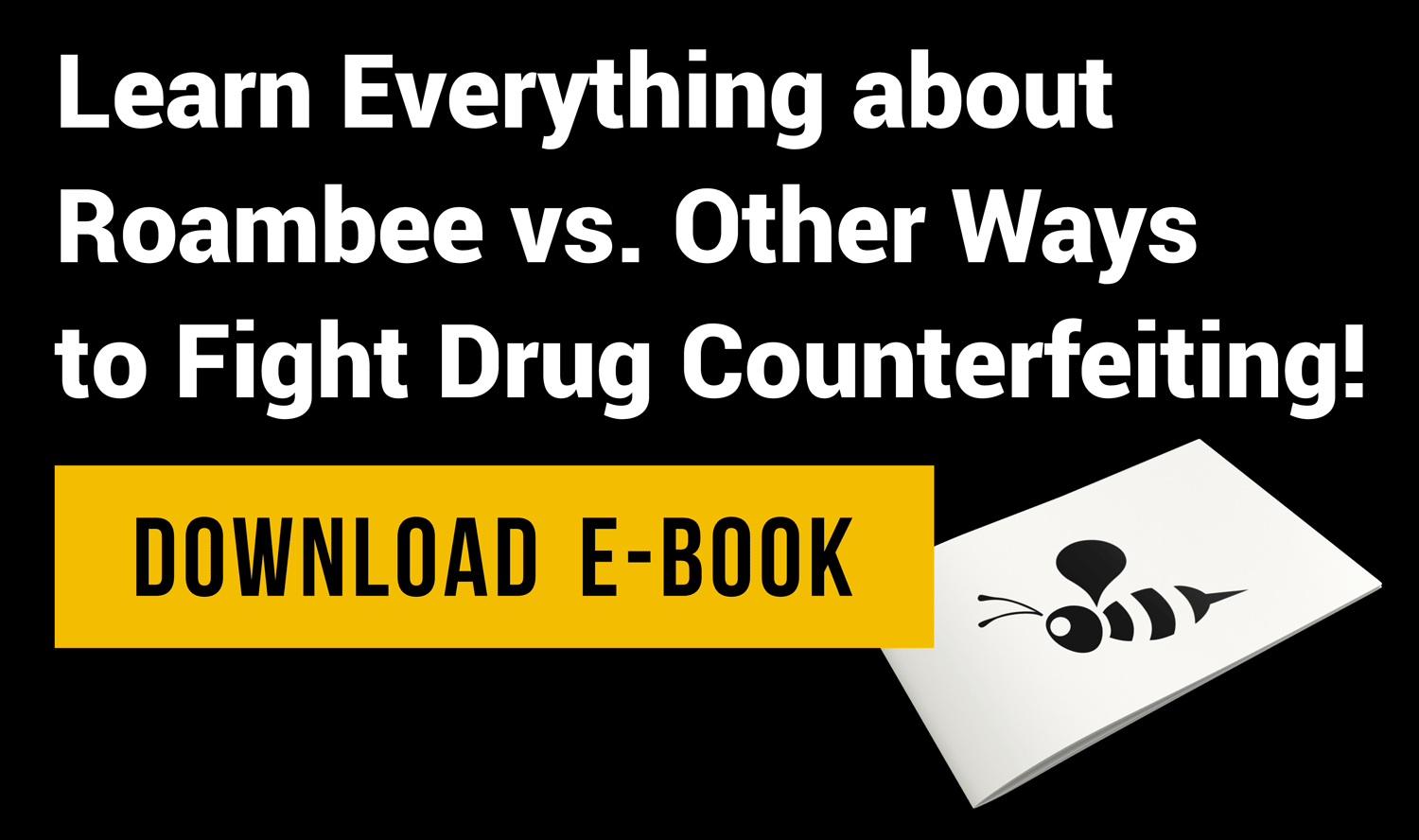A WHO report says poor countries lose over 250,000 children to fake and substandard drugs of malaria and pneumonia every year. Although most industries are focusing on supply chain efficiency, pharma supply chains bring a bigger worry into the picture: patient safety from counterfeit medicines. Thus, one of the major worries for the global pharmaceutical industry around patient safety is counterfeit medicines. While various pharma companies have tried several ways to overcome it - barcoding, RFID, and lately blockchain - the real concern is if it is working. And if it isn’t, is there a more comprehensive solution that we still need to explore to curb counterfeit medicines?
Pharmaceutical supply chain is a complicated process to begin with, but what makes it riskier (perilous, even) is the fact that it is more prone to infiltration of counterfeit medicines and theft, especially given the number of online pharmacies appearing lately. Over the last 10 years, more than 35,000 online pharmacies have come up, and many of them have been found to be selling either counterfeit, or unapproved medicines2. There have been a lot of efforts by the pharma industry as a whole to keep the supply chain both thin, as well as in check for such mishaps and to meet strict government regulations. This includes the use of QR codes, holograms, RFID tags, and blockchain.
While item-level barcoding, Radio Frequency Identification (RFID), and other ways that help automatically identify fake medical products can work well to protect pharma goods from theft and imitation/forgery, they aren’t fully free from hassles and loopholes.
Here’s a detailed look at each of these as a measure to combat counterfeit medicines, and their pros and cons.

Barcodes
It has become a common practice in the pharma industry to use barcodes — edible, QR, holograms — to automate fake product identification at an item level. It is preferred by most companies since it is a familiar as well as inexpensive technology. It wouldn’t cost you a fortune to print and apply barcodes to your medicines. The idea is to mark the medicines with barcodes, sometimes as high-tech as edible ones, to protect them from counterfeiting and other troubles like theft. It’s important to make sure it's not just a pre-printed barcode on the packaging, your barcoding needs to work to address counterfeit medicines at an item-level.
Pros:
- Simple process: once the items are marked, it simple to identify fake drugs — the barcode reader would identify a duplicate code triggering investigation into possible counterfeit.
- Scalable: it is easily scalable, without even having to depend on the kind of infrastructural set up.
Cons:
- Scanning operations: at every node or transit point in the distribution process, you need someone scanning the packages or drug cartons, increasing the chances of human-error and person-hours in the process. The more granular you get, the higher the labor cost.
- Easy to replicate tags: barcoding is not secure enough until it is at an item level (which is another big trouble) if they are to provide any real protection.
- Edible barcoding is overkill: it isn’t easy to deploy edible barcodes at a large scale. Although the edible barcodes technology is a thing now, it is fairly new, with the most difficult part being legal approvals at a global level.
All said and done, barcoding as a practice is just fine, but pharma companies may still lose the bet when it comes to making the system counterfeit-proof. It could be a major fiasco if the fake product gets dispensed before the original one; the barcode will catch the original one as duplicate and there’s no telling if you’re unknowingly holding back a genuine product.

RFID
RFID (radio frequency identification) is a modern identification procedure that can provide transparency in pharma logistics. The RFID tag could easily be hidden inside an ordinary label, allowing you to track the drug's progress throughout the supply chain. The idea is to reject any product that could not be traced back to the manufacturer through RFID scanning.
However, sometimes even the metal packaging used for medical products like tubes, could complicate the identification process and mistakes can be made.
Pros:
- Good to secure in storage: it is a good way to ensure safety of the package that is tagged, not the materials in transit.
- Automated: scanning is done by fixed readers most of the time, and there is no human involvement, which minimizes the possibility of error.
Cons:
- Requires heavy infrastructure: furthermore, it is not even available for end-to-end security.
- Inability to provide in-transit security: RFID works only for a storage facility; it doesn’t work when goods are in transit, especially when there are multiple modes of transportation involved.
- Marking packages isn’t enough: RFID tags are used only to mark the packages owing to its “high cost per tag” when compared to barcodes. Individual drug packages are hard to tag making these packages easy to replicate within an LTL or FTL consignment with fake goods.
And thus, RFID as an anti-counterfeiting technology has remained a promising idea for decades, however it hasn’t worked out as a real solution.

Blockchain
There's great potential in blockchain when it comes to securing the pharma supply chain. It has the ability to provide a unified solution for counterfeited medicines by making the whole drug distribution system for all the stakeholders traceable at every point in the supply chain.
The pharma blockchain works at enhancing data security and integrity, allowing for the supply chain to be functional, transparent, and auditable, resolving all pharma supply chain troubles in the process — visibility, regulatory, cold chain shipping.
Pros:
- Better digital audit trails: blockchain implementation would ensure end-to-end traceability, reduced losses from theft and counterfeiting, and enhanced accountability.
- Tamper-proof: blockchain isn’t at all easy to tamper with, unlike methods like barcodes and RFID tags.
- Cost-effective: there are a lot of long-term cost savings associated with proper adoption the blockchain solution.
But even blockchain alone cannot be labeled as the perfect way to deal with fake medical products.
Cons:
- Lacks automated data capture: blockchain only stores information. It requires a system like barcode or RFID or manual data capture to generate data about packages. It’s not a replacement for a track and trace solution.
- Doesn’t work for small to medium enterprises: because there aren’t enough distributed ledgers within the intranet, and the kind of set up such a system requires isn’t something a small or medium enterprise would be able to afford, or handle.
For pharma blockchain to be more inclusive and infallible, it needs to have the one biggest thing that it misses — elimination of manual data capture.
Is there’s something that can help pharma companies achieve that level of automation?

The Answer Is… IoT + AI + RPA + Blockchain for Supply Chain Security
When combined, blockchain, IoT, AI, and Robotic Process Automation (RPA) can help a great deal to attack medical product counterfeiting and theft. It will not just be a completely automated, but also a tamper-proof approach to secure the pharma supply chain.
What this tech combo brings to the table is the automated data capture that the existing systems have been missing:
- IoT sensors like the Bees can capture package-level location and condition both in the warehouse and in transit.
- AI leverages pattern analytics and machine learning to filter out the noise and validate whether an event is really a risk or not. For example, an unauthorized stop along with an event confirmation for door opening is a validated risk.
- RPA helps with response automation where human response within the company could be delayed. For example, RPA can ensure that the right nodes are activated during a risk or confirmed theft.
- Blockchain secures data records and makes them irreplaceable, so that authenticity is maintained.
In addition to technology, a control tower like the BeeCentral that relies on technology plus human rationale can go a long way in not only preventing counterfeiting medicines but also addressing it promptly by blacklisting and initiating the protocol during an event.
Although these technologies might sound complicated, it is a cost effective, scalable, and error-free system. Right now, the only practical solution to being on top of the millions and billions of drugs and medical products roaming around the globe, is to automate the data capture, not just that, but also the data transfer and storage.
Benefits & Drawbacks of Using IoT + AI + RPA + Blockchain
The pros of using this combination are:
- Zero human intervention: once you blend your blockchain system with IoT, you can automate almost everything, including the data capture.
- Zero scope for error: complete automation eliminates all the chances of error (due to manual data handling) that stand in the way of the faultless system you aspire for.
- Zero need for process reengineering: you do not need the level of process engineering that you would if you were to automatize the system or do anything in relation to its set-up, maintenance, or analysis on your own.
The only hiccup is setting up an in-house structure like that will be a next-to-impossible job for any pharma company — be it a small, medium, or even large enterprise — without the required engineering expertise.
This is the drawback. But there’s a way to overcome it:
To maximize your benefit, you need to find a vendor that does the job for you — clubs IoT with AI, RPA, and blockchain, and manages the whole system right from planning and setup to constant maintenance and analytics — basically, brings in the required process engineering with an on demand deployment.
In Summary
Given the kind of access pharma companies have to technologies these days, you can build anything from a basic barcoding system to a completely automated blockchain. Now when you know the good and bad side of Barcodes, RFID, and Pharma blockchain when it comes to protecting your pharma supply chain from counterfeiting medicines and theft, it should be much easier to make the decision.
Looking at the pros and cons of all the three solutions as discussed above, what you need is a comprehensive solution — a hybrid IoT solution that can overcome the drawbacks of Barcoding, RFID, and Blockchain systems — with the ability to automate the system to a level that eliminates all manual intervention.
Sources
1 - https://www.who.int/medicines/regulation/ssffc/publications/GSMSreport_EN.pdf
2 - https://nabp.pharmacy/wp-content/uploads/2019/03/NABP-Drug-Importation-Statement-2019.pdf










